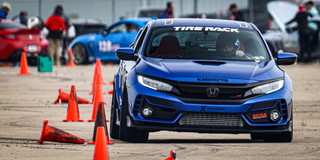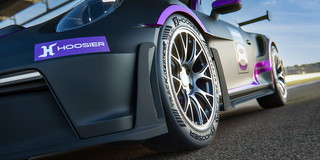
This article first appeared in the May, 2016 edition of SportsCar Magazine. SCCA members can read the current and past editions of SportCar digitally here after logging into their account; To become an SCCA member and get SportsCar mailed to your home address monthly in addition to the digital editions, click here.
Mounting race seats and harnesses in a competition car is arguably the most important part of the build – so, how do you do it right?
Safety first. Everyone says it, but often the best of intentions coupled with a lack of knowledge, lead to something of questionable safety. Take, for instance, seat and harness mounting in a competition car. Most of us don’t have the resources for a professional race shop to construct our racecars. Rather, we sweat away in our home garage, scratching our head trying to come up with the best (and hopefully safest) mounting methods. At these moments, we’re all too aware that we’re making up much of what we’re doing. But rest assured, you’re not the first one attempting to mount a seat and harness – there are answers.
Let’s look at SCCA’s Club Racing GCR rulebook for seat and harness mounting guidelines: 9.3.41 states, “Mounting structures for racing seats may attach to the floor, cage, and/or center tunnel.” It then discusses roll cage mounting points for race seats – but the truth is most of us mount race seats to the car’s steel floor. But, how?
Harness lap belts are covered more extensively in the GCR: 9.3.19.D reads, “Each seat (lap) and shoulder belt of the harness (5, 6, or 7 points) shall have an individual mounting point,” and that “the minimum acceptable bolts used in the mounting of all belts and harnesses is SAE Grade 5/Metric 8.8.” Also, “mounting hardware, including eye bolts, as provided by the belt manufacturer, may also be used for mounting belts and harnesses,” and when not mounted to the cage, “large diameter mounting washers or equivalent should be used to spread the load.” As with everything in the GCR, however, these are starting points. What do the pros do?
Fabryce Kutyba, Sales Director for MOMO Automotive Accessories, has been involved in racing for 20 years, building high-level racecars for a variety of successful professional series, including Pirelli World Challenge. “Major manufacturers – Porsche, Audi, Ferrari – will mount their seat to a seat base integrated to the chassis that’s welded in, and they’ll have some kind of slider system that’s crash tested and approved,” says Kutyba. However, as Kutyba notes, most people are not racing those cars, and most don’t use sliders. Instead, the choice is to either buy a prebuilt intermediary bracket, or fabricate one.
Purchasing a pre-made mount that connects a race seat’s side bracket to the car’s floor is Kutyba’s preference, but sometimes you have no choice but to build your own. For that, steel is a great material; strong and affordable, steel allows you to bolt or weld the bracket together, then attach that to the car’s floor by welding (“Welding is only as good as the welder,” Kutyba reminds us), using the manufacturer’s stock seat mounting holes, or drilling your own holes.
Aluminum is another option. “Aluminum can be used, but I wouldn’t use anything that’s less than a [thick sheet of] 6061, so the bolts going through it have enough bite,” Kutyba says. “I would also recommend a minimum of Grade 10 or 12 bolts.”
When it comes to harness mounting, Kutyba’s preference is to exceed the GCR’s bolt requirements when not using the manufacturer’s hardware. “I’d recommend at least Grade 12 bolts.”
Whether mounting seat brackets or harnesses, load plates are essential. “If you’re drilling a hole in the floor or transmission tunnel, that’s just sheet metal, so you’ll want to have a fairly significant washer on both sides to sandwich it so the bolt doesn’t tear out,” he explains. For that, you can use a steel plate, large washers or, in some cases, harness manufacturers supply plates equipped with welded nuts.
Lap belt mounting locations are also key. While Kutyba says it’s perfectly acceptable to drill your own holes, utilize factory seatbelt bolt holes; or use a combination of the two. “You want to keep the lap belt bolts as level and symmetrical as possible from left to right. You don’t want the position to be four inches apart. If you’re within an inch or so [in symmetry] then you’re probably OK.”
Finally, which is better, clip-in or bolt-in harness mounts? Kutyba notes this is personal preference – although sometimes it can become a matter of necessity. “I’m a big fan of the clip-in harness mounts, but I wouldn’t say one is better than the other. In the end, it really comes down to the packaging of the car.”
While these tips will help during seat and harness mounting – or re-mounting, now that you know you did it wrong – rest assured that the process will still seemingly take forever and prove to be one of the most frustrating portions of the entire build. But take your time, do it right, and when you’re done, you can strap yourself in knowing you’ll be safe and sound.
Words and photo by Philip Royle










